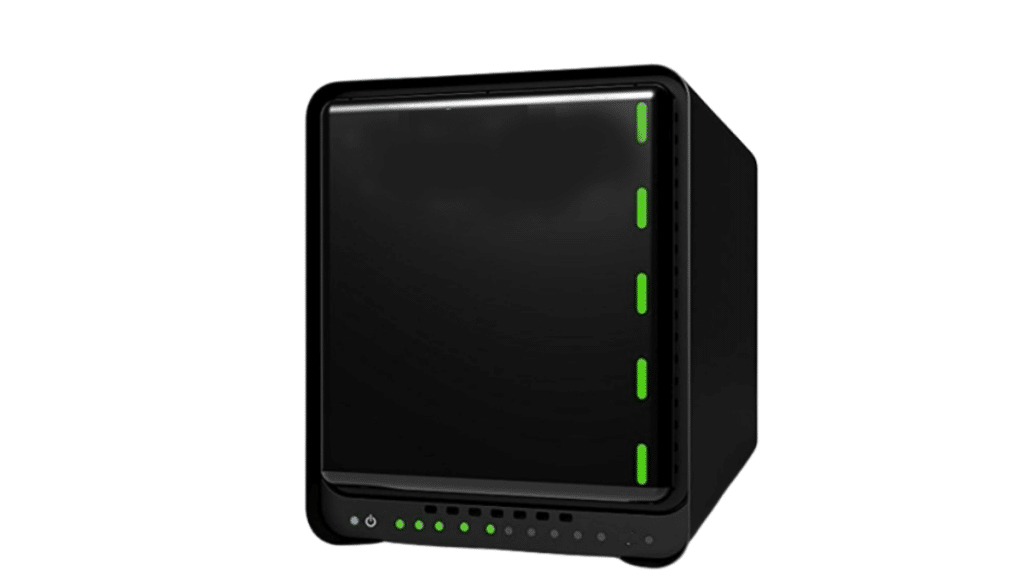External or internal storage media like HDDs, SSDs, flash drives, etc., are used by everyone for data storage, data transfers, and data backups. These devices, while being different from each other, share a common trait – they are directly attached to a computer. This is why these storage devices are also known as Direct Attached Storage or DAS.
A DAS is a type of storage device that is mainly utilized by individuals and small and medium businesses (SMBs). Using it makes storing or accessing data simple and fast. As these devices are directly connected to a single system or workstation, the data on them can easily be accessed while offline.
Let’s dive deeper to understand more about this storage in detail.
What is DAS?
As mentioned earlier, Direct Attached Storage (DAS) is an isolated type of storage media that directly connects to an individual computer or a workstation. There are various forms of direct attached storage that are commonly used. Some common examples of DAS media are –
- Hard Disk Drives (HDDs)
- Solid State Drives (SSDs)
- Flash Drives
- Optical media
- USB enclosures, etc.
DAS is typically used in personal computers or servers as internal disk drives. It is also used as an external storage drive like an HDD or an SSD for creating backup copies of your data. SMBs also employ DAS in the form of file servers and private storage connected to dedicated servers.
How is DAS Accessed?
A Direct-Attached Storage device is connected to a host computer, private server, or workstation via an interface. The setup is very simple to understand – A DAS media is connected directly to a computer/workstation via HBA or Host Bus Adapter and doesn’t use any hubs, switches, or routers. In cases of external DAS media, they are connected via cables.
Some of the most commonly used interfaces are –
- ATA or Advanced Technology Attachment
- SATA or Serial Advanced Technology Attachment / eSATA
- SCSI or Small Computer System Interface
- SAS or Serial Attached SCSI
- FC or Fiber Channel
- IEEE 1394 a.k.a. Apple FireWire
- NVMe
- USB or Universal Serial Bus
Why is DAS Used?
A DAS media is mainly used for creating offline and private data backups. As DAS is not a part of an active network, it is also used as a high performance storage device by eliminating unnecessary server traversing and latency issues faced by networked storage solutions like NAS, cloud storage, etc.
Various forms of DAS media, such as HDDs, SSDs, flash drives, SD cards, etc., are used by individuals. However, for an individual like a graphic designer, video editor, or app developer, a single disk drive will not be sufficient. This is where a USB enclosure containing a combination of SSDs/HDDs in a RAID configuration is used.
Not only this type of DAS setup is efficient, but it also allows room for scalling up the storage in the future. This makes DAS a highly flexible and adaptable storage type.
Advantages and Disadvantages of DAS
Just like any technology, DAS comes with its fair share of advantages and disadvantages. These are tabulated below –
| Advantages | Disadvantages |
| Directly attaches to a computer | Limited scalability |
| Offers high data transfer rates | Inconvenient as it requires additional drives |
| Less expensive as compared to SAN or NAS | Limits data sharing across multiple computers |
| Easy to configure, install, and manage | High potential for data loss due to disk failure or hardware issues. |
What to do in case of Data Loss from DAS?
Irrespective of the type of DAS media used, it is susceptible to data loss. Major reasons behind data loss from a DAS include –
- Disk failure
- Accidental deletion
- Formatting
- Faulty cables/HBA
- Malfunctioning drive enclosure
In the case of a DAS configured as a RAID, added redundancy prevents data loss. However, the redundancy is dependent on the selected RAID configuration, i:e. RAID 5 (1 drive failure), RAID 6 (2 drive failure), etc. If the disk failure is greater than the predefined values, the setup will fail, leading to permanent data loss.
Data losses are unprecedented and DAS media is no exception. DAS media is prone to data loss due to various reasons as discussed above. However, most of the data loss cases, such as accidental deletion, formatting, etc., can easily be dealt with using an advanced RAID data recovery software.
Irrespective of the DAS that you are using, an advanced RAID recovery software is capable of recovering lost or deleted files from various storage devices like HDDs, SSDs, flash drives, and more.
But DAS is not just limited to HDDs and SSDs. If configured as either a RAID 5 or RAID 6, this software can help you recover lost data if the disk failure is below the fault tolerance of the selected RAID array.
However, a complete RAID failure occurs in case of disk failure exceeding the fault tolerance of the said RAID configuration. Such a severe scenario leads to permanent data failure. In such a case, only a backup can help you restore data.
Conclusion
Direct Attached Storage is a fast and simple data storage solution that directly connects from a PC. Be it an HDD, SSD, USB device or your internal drive, these all are a form of DAS.
However, these diverse devices have one thing in common – they are prone to data loss. It could happen due to any reason such as accidental deletion, formatting, corruption, human error, etc. Encountering data loss from DAS media could be a difficult situation for a user. However, using an advanced data recovery software can help you retrieve lost files without much hassle.
